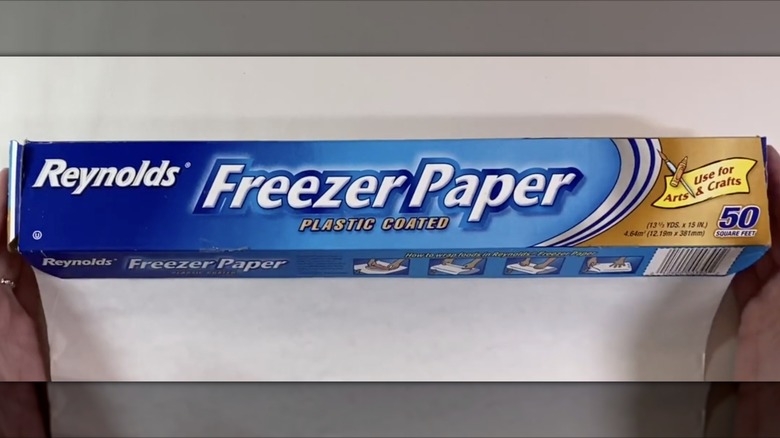Martha Stewart's Affordable Solution For Lining Pantry Shelves
We may receive a commission on purchases made from links.
There really isn't an inch of the home that Martha Stewart hasn't conquered. When it comes to kitchens, the mistress of all things domestic has a trick for keeping each area tidy, attractive, and optimally functional — from using glass jars for decluttering to expanding countertop space in tiny kitchens. You would simply never find an unkempt pantry in a Martha Stewart kitchen, and she has a hack for lining the larder shelves that is both efficient and affordable: freezer paper.
The main function of this material is to wrap foods prior to freezing and storing them. It has a special coating on one side that is designed to help frozen items retain moisture and block air from infiltrating and causing freezer burn (which won't make your foods unsafe to eat, but can make them dry and flavorless). This leak-guard quality also makes it an ideal moisture-resistant layer for lining shelves; if a jar or a container spills in your pantry, you're protected.
Freezer paper is thicker, heavier, and more robust than other culinary paper products, such as wax paper (which is prone to tearing easily). It can stand up to packaged food items in your pantry as well as your heaviest pots, pans, and glassware. Some heavy-duty freezer paper products, including those used in crafting and quilting, can be as thick and sturdy as cardstock.
Freezer paper is affordable and easy to swap out
A 50-square-foot roll of freezer paper can be purchased for around $7 on Amazon, while rolls of shelf liner average between just 6 and 15 feet per roll and typically cost quite a bit more per unit. Wallpaper, a popular choice for lining pantry shelves, is even more expensive. Depending on the size of the kitchen and the amount of storage, it can take multiple rolls of either product to line all of a kitchen's pantry and cupboard shelves just once. One package of freezer paper, on the other hand, can cover even a large kitchen's shelves multiple times before running out.
Protecting shelves and facilitating easy cleanup are two of the primary reasons for using a liner, but if the paper becomes excessively soiled or worn, it can also be quickly removed and replaced. In contrast, adhesive-backed shelf liner can be a chore to remove once installed. Peeling it from the surface of your shelves can be both difficult and messy, with fragments of paper and adhesive often remaining and needing to be scrubbed or scraped off. While wallpaper is more durable than adhesive shelf liner, it can be even more difficult to remove.


